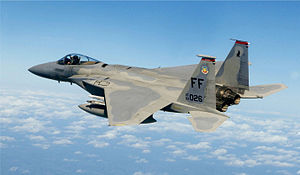
The McDonnell Douglas F-15 Eagle is an American twin-engine, all-weather tactical fighter aircraft designed by McDonnell Douglas (now Boeing) to gain and maintain air supremacy in aerial combat. Following reviews of proposals, the United States Air Force selected McDonnell Douglas' design in 1967 to meet the service's need for a dedicated air superiority fighter. The Eagle first flew in July 1972, and entered service in 1976. It is among the most successful modern fighters, with over 100 victories and no losses in aerial combat, with the majority of the kills scored by the Israel Air Force.
The Eagle has been exported to Israel, Japan, and Saudi Arabia. The F-15 was originally envisioned as a pure air superiority aircraft. Its design included a secondary ground-attack capability
The F-15 can ultimately trace its origins to the Vietnam War, when the U.S. Air Force and the U.S. Navy fought over tactical aircraft being used in the war. At the time, Defense Secretary Robert McNamara was pressing for both services to use as many common aircraft as possible, even if there were performance sacrifices involved. As part of this policy, the USAF and Navy were involved in the TFX (F-111) program, aiming to deliver a medium-range interdiction aircraft in Air Force use that would also serve as a long-range interceptor aircraft for the Navy.